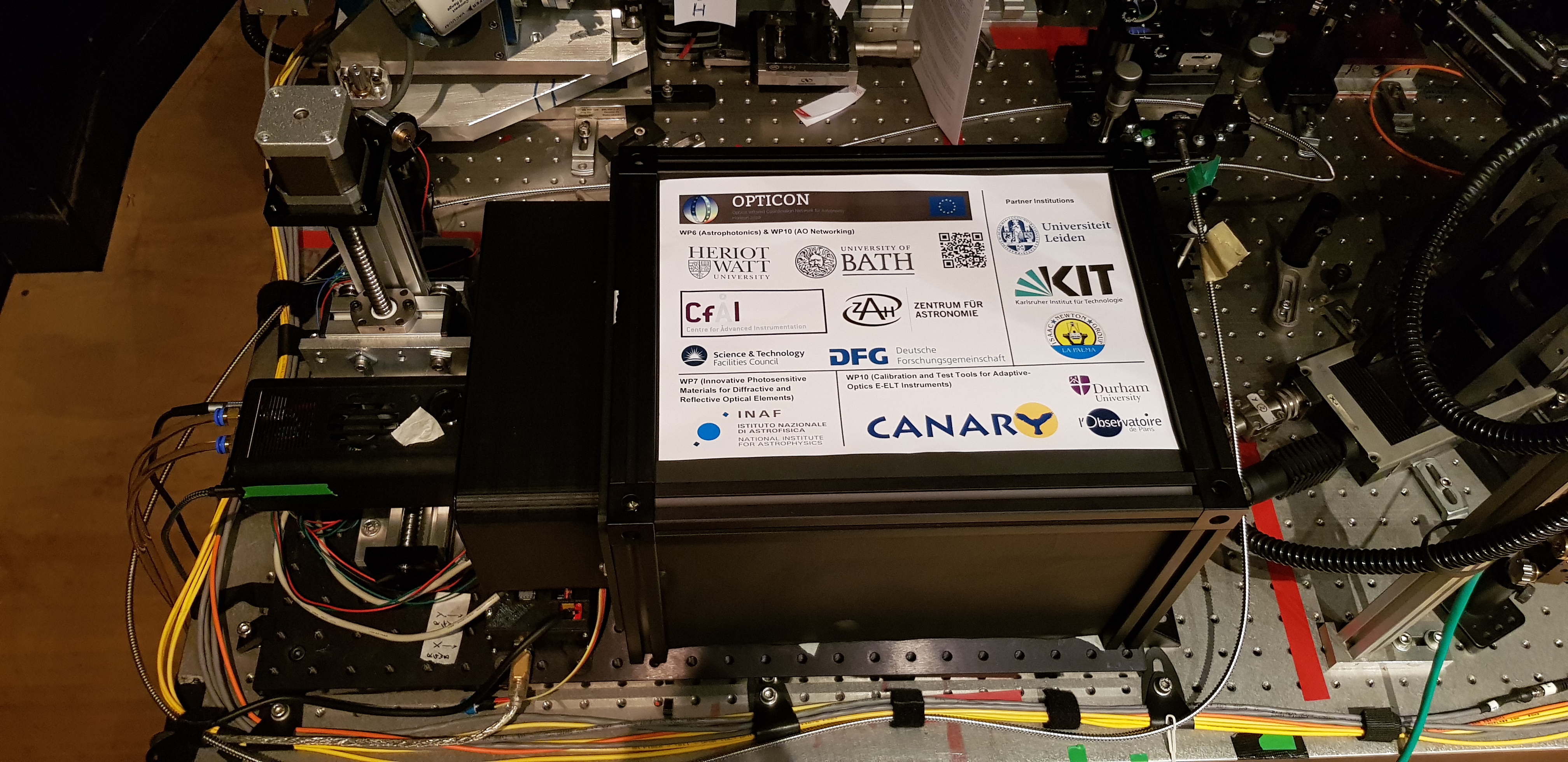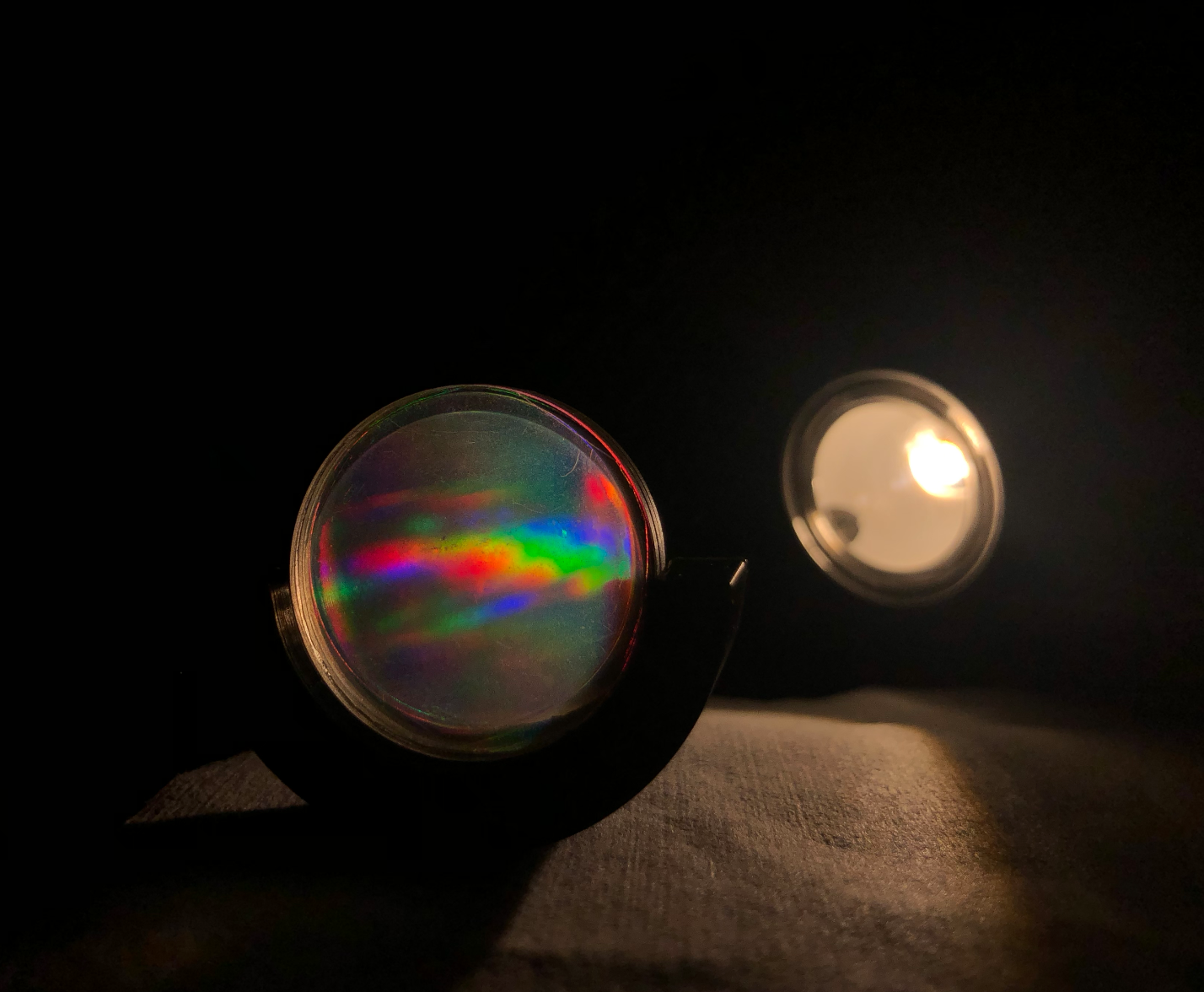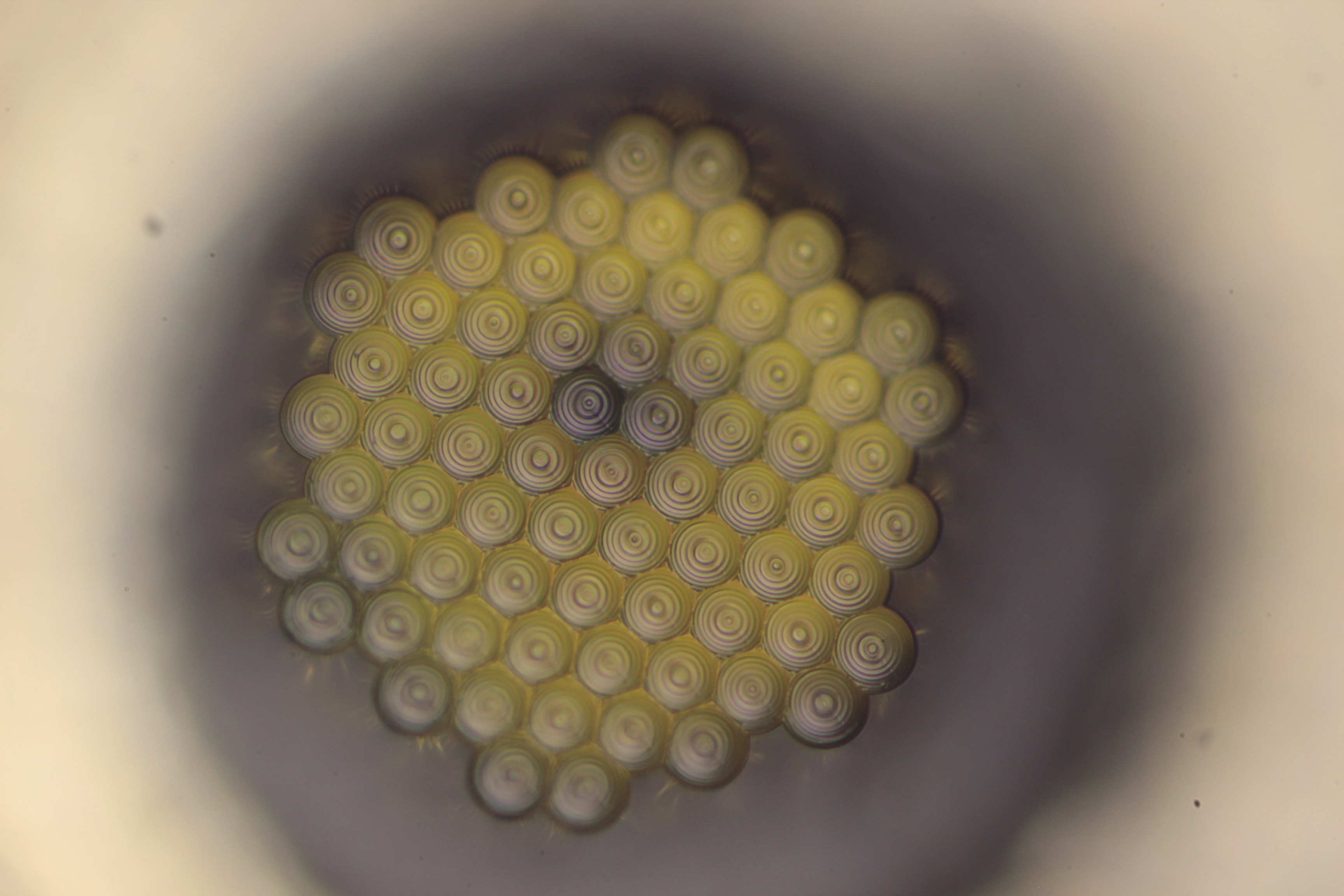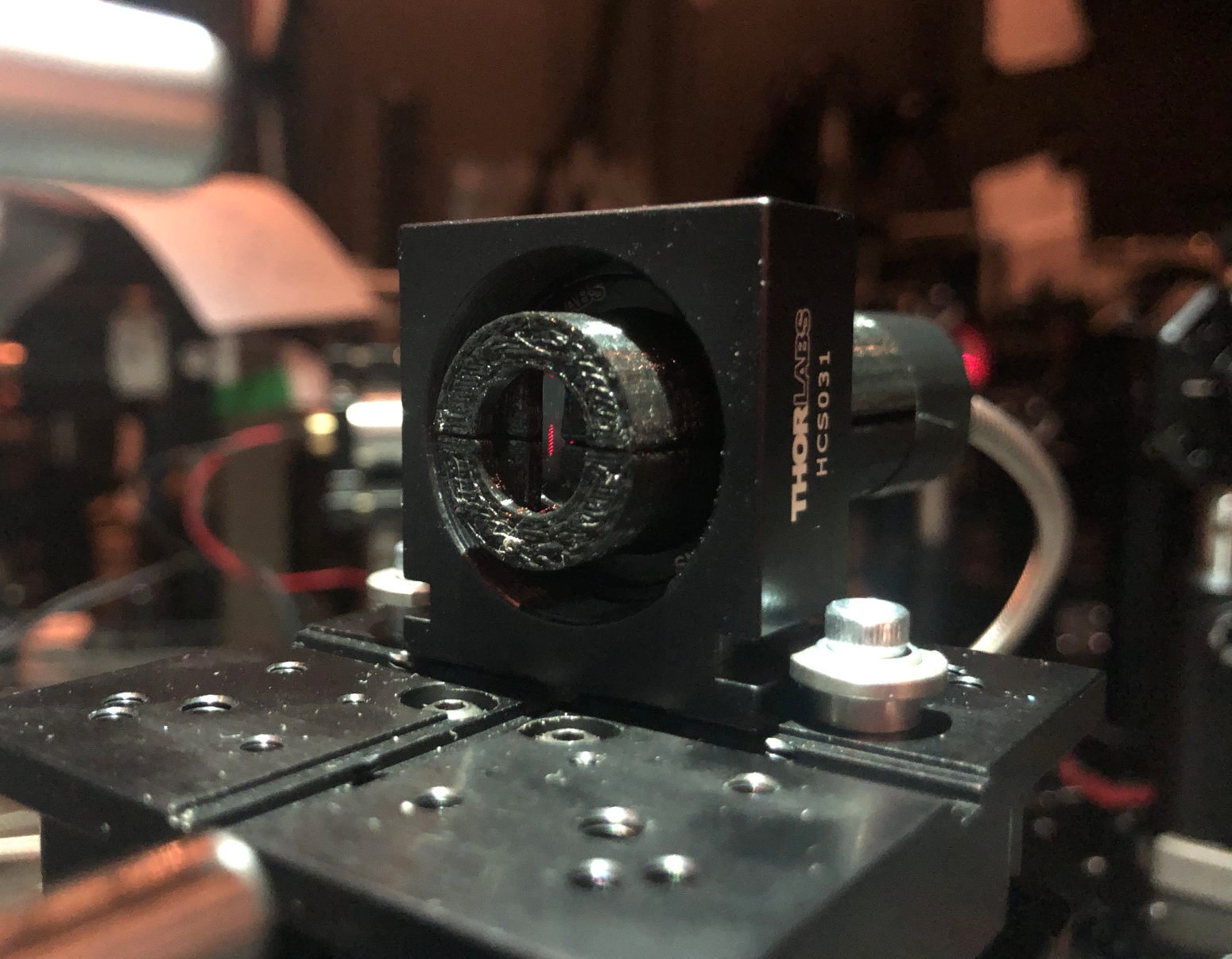Astrophotonics
Contact: Rob Harris
Astrophotonics is a growing field aimed at improving astronomical instrumentation through the use of photonics. This takes many forms, from using optical fibres to transport light over large distances, to integrating optical components on a chip. If you want to find out more about how we plan to develop the field in the next 10 years take a look at the community’s roadmap.
Here in Durham we concentrate on using astrophotonic technologies to get light into the fibre and manipulating it. We use two-photon polymerisation to improve coupling, novel fibres to transport the light and ultrafast laser inscription to reformat it. See images below of one of our latest instruments - the MCIFU, designed to take spectra of exoplanets.

The Multi-Core Integral Field Unit (MCIFU). A fibre fed Integral Field Unit designed to test next generation technologies to detect exoplanets. Credit: Alessio Zanutta and the MCIFU team
 The triple stacked Volume Phase Holographic Grating developed at INAF Brera. Here it is illuminated with visible light and the three orders can be clearly seen. Credit: Alessio Zanutta and the MCIFU team.
The triple stacked Volume Phase Holographic Grating developed at INAF Brera. Here it is illuminated with visible light and the three orders can be clearly seen. Credit: Alessio Zanutta and the MCIFU team.


A photonic reformatter illuminated with light from a HeNe laser. Here the 72 cores can be seen through small holes in the Chromium coating. Credit: Alessio Zanutta and the MCIFU team


/prod01/prodbucket01/media/durham-university/departments-/physics/cfai/CfAI-Webpage-Banner-smaller.jpg)